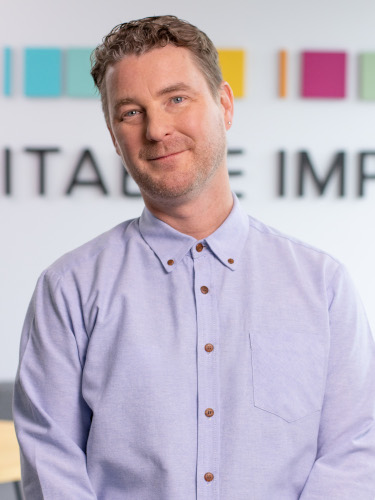This is one in a series of articles in our special report, “The Changing Face of Philanthropy in Canada.” To see other articles in the series, click here.
As young wealthy donors slowly take the place of their elders, the philanthropy landscape is shifting. Change is coming, and so is the need to adapt.
One continuing worry is the persistent decline in charitable giving and the fact that young people are less likely to donate to registered charities than older people are. Yet the need is greater than ever. The 2024 edition of the Giving Report from CanadaHelps found that more than half of charities say they are unable to keep pace with demand for their services.
The reasons behind these trends are complex. The decline in giving may be related to the decline of traditional institutions like churches, which once played a central role in engaging the public in giving back.

“There’s nowhere to go to learn about giving today,” says John Bromley, founder of Charitable Impact in Vancouver. “So how do you develop a culture of giving without the church, mosque or synagogue? As human beings, we have this innate generosity, but if it’s not nurtured, what’s going to happen with it?”
Bromley thinks the big question is not so much whether the next generation will act generously, but how they will carry out their philanthropy goals. He makes a key distinction between people who give proactively—making charitable giving a regular part of their lives—and those who simply react to specific events or fundraising appeals.
“People often give in a reactive way during crises or events they see in the news, like the L.A. fires or the devastation in Gaza,” he says. “It’s human to relate to the urgency of these events, of course, especially for young people who think, ‘I want to do something to help with that now.’”
The question is whether those young people go on to adopt their own habit of regular charitable giving, he says. “It seems quite clear that they don’t, and that’s a problem to solve.”
The key to sustaining charitable giving in the long term is building a broader culture of philanthropy, he says, for instance through school programs that foster a participatory experience.
“Some things we’re looking at doing is taking employee giving programs really seriously—going into corporate cultures,” Bromley adds. “They aren’t theologies, but they are places where people gather regularly and have social relationships.”
The role of advising
Wealth advisors are not typically well-educated on philanthropy, Bromley says, and the number of people who seek out dedicated philanthropy advice is “so close to zero, it’s not really worth talking about—unless we are talking about how to stimulate that kind of interest and demand among more people.”

Advisors could play a more significant role if they made philanthropy a core part of their services. For instance, introducing philanthropy to clients and their families could create another way to get to know the younger generation and potentially retain them as clients for the long term.
Of course, wealth advisors “can’t know everything about everything,” says Bromley. “My advice to them is to link up with a team that can help them provide confident and knowledgeable advice to their clients about giving, while working within the context of the advisor’s existing services.”
Sharilyn Hale, founder and president of Toronto-based Watermark Philanthropic Counsel, encourages wealth advisors to partner with philanthropy advisors who can address charitable giving options, impact measurement, family governance and legacy planning.
As for the generational shift, Hale says it’s not all bad news, because younger donors often bring a fresh perspective to the world of giving.
“They don’t look at their philanthropy as a discrete envelope,” she explains. “Philanthropy is one way they want to do good in the world, but they may also think about where they volunteer their time and how they spend their consumer dollars.”
Young people are also scrutinizing investment strategies, both theirs and their parents’, to find an alignment in values. This holistic approach often stands in stark contrast to the more siloed approaches of previous generations.
Simply assuming that they will behave the same way as their parents or grandparents did is a mistake.
Bruce MacDonald, Imagine Canada
Younger donors are integrating giving into a broader strategy for creating positive change, Hale says. They’re looking to leverage not just their financial resources, but also their time, networks and investment power to create impact.
To reach younger donors, Hale recommends a multifaceted approach. In addition to connecting individually, charities need to embrace digital giving platforms that have shareable, visually engaging content that highlights the organization’s impact and mission.
Peer-to-peer fundraising can also be a powerful tool, she says. “Recognizing and rewarding top fundraisers to foster a sense of community and healthy competition can also help drive participation.”
Extending traditions of giving after a donor’s death
Bruce MacDonald, president and CEO of Imagine Canada in Toronto, says some organizations are already reeling from the deaths of major donors and are scrambling to adapt. At the heart of this shift lies the next generation—the children and grandchildren of current philanthropic powerhouses.
MacDonald suggests actively engaging them, rather than assuming they will continue giving in the same way as their parents or grandparents.

Advisors could develop impact reports that tell compelling stories, talk with clients about how to involve their kids in continuing support for causes, and invite the young people along for tours and events.
“If it’s Mom and Dad’s cause, do the children actually feel a relationship or connection to that cause where they might stay with it when they have the financial resources?” MacDonald asks. “This disconnect poses a significant challenge as organizations grapple with the reality that the decision-making point is changing.”
Ultimately, MacDonald says, organizations that don’t consider how young people view things today are in danger of being left out.
“Simply assuming that they will behave the same way as their parents or grandparents did is a mistake,” he says.
“There are fundamental differences in this younger cohort,” he adds. “Their starting point as financial contributors is so different than their parents or grandparents. If organizations only act as in the past, a lot of young people will be turned off.”
Also happening in the background is the great intergenerational wealth transfer.
“There’s maybe a decade-long runway where we might see a lot of the current practices holding,” he says. “That gives us time to establish relationships with the children.”
The implications of a drop in donations are reduced programs and services, he points out.
“The data suggests that when the older adults pass away, if we haven’t done that work, the dollars coming into the sector may be drastically reduced.”
Join Canadian Family Offices on February 21 for our online panel discussion about the state of giving in Canada. Register here.
The Canadian Family Offices newsletter comes out on Sundays and Wednesdays. If you are interested in stories about Canadian enterprising families, family offices and the professionals who work with them, sign up for our free newsletter here.
Please visit here to see information about our standards of journalistic excellence.



